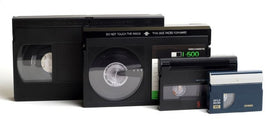
In the age of smartphones and digital cameras, preserving memories has never been easier. Yet, for many of us, the bulk of our most cherished memories are still captured in printed photographs. Whether it's vintage family portraits, holiday snaps, or candid moments frozen in time, these physical pictures hold immense sentimental value. However, as time marches on, these precious prints get lost or succumb to the elements. That's where the urge for digitization arises. But before you dive headfirst into the world of DIY picture scanning, it's essential to understand the potential pitfalls that can turn your preservation efforts into a nightmare.
Image Quality
One of the primary reasons for scanning photos is to preserve image quality. However, not all scanners are created equal. A cheap or outdated scanner may produce subpar results, with low resolution, poor color accuracy, or visible artifacts. Without the proper equipment, your digitized photos may lose the charm and clarity of the originals.
Time and Patience
Scanning a large collection of photos is a time-consuming task that requires patience and attention to detail. It's easy to underestimate the time involved, leading to frustration and burnout. Rushing through the process can result in sloppy scans, missed details, or even damage to fragile prints.
Technical Expertise
Operating a scanner might seem straightforward, but achieving optimal results often requires technical expertise. Settings such as resolution, color mode, and file format can significantly impact the quality of your scans. Without the necessary knowledge, you may end up with files that are too large, too small, or improperly formatted for your needs.
Physical Damage
Handling delicate photographs can be risky, especially if they're old or fragile. Improper handling during the scanning process can lead to tears, creases, or fingerprints on the prints. Additionally, using the wrong scanning equipment or settings may exert undue pressure on the photos, causing further damage.
Storage and Organization
Once your photos are scanned, you'll need a system to organize and store the digital files. Without proper organization, it's easy to lose track of your precious memories amidst a sea of digital clutter. Moreover, failing to back up your files leaves them vulnerable to loss or corruption, putting years of memories at risk.
Privacy and Security
Scanning personal photographs involves digitizing intimate moments and memories. Therefore, it's crucial to consider privacy and security implications. Storing your digital photo collection on insecure devices or "free" cloud services may expose them to unauthorized access.
Cost Considerations
While a quality scanner for $300-$600 may seem reasonable, DIY scanning can incur hidden costs over time. From purchasing specialized software for editing and organization to investing in archival-quality storage materials, the expenses can add up quickly. Moreover, if you encounter technical issues or damage during the scanning process, you may need to seek professional assistance, further increasing the overall cost.
Picture Scanning Services
DIY picture scanning is not without challenges. That's why more consumers find that professional picture scanning services offer a better option. Photo scanning specialists provide consistent quality, without the DIY frustration, often charging far less than the cost of purchasing a new scanner. Using a trusted service ensures that your treasured photographs are preserved for countless generations.
